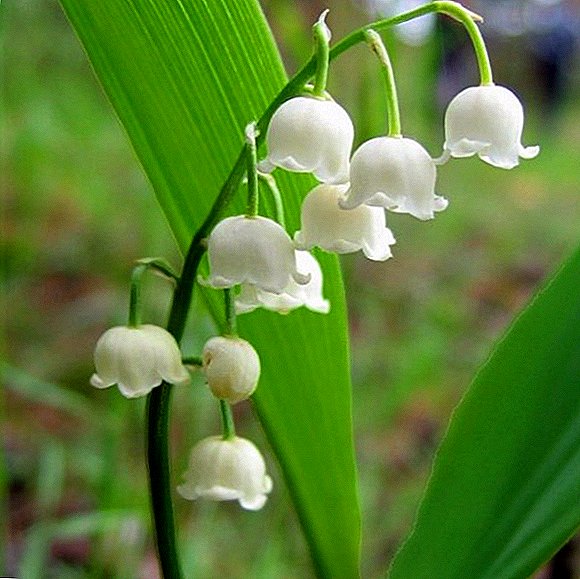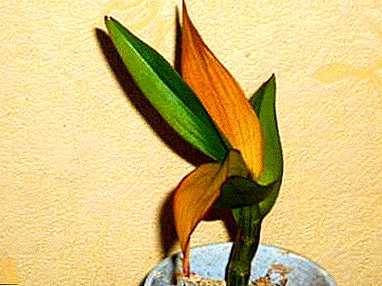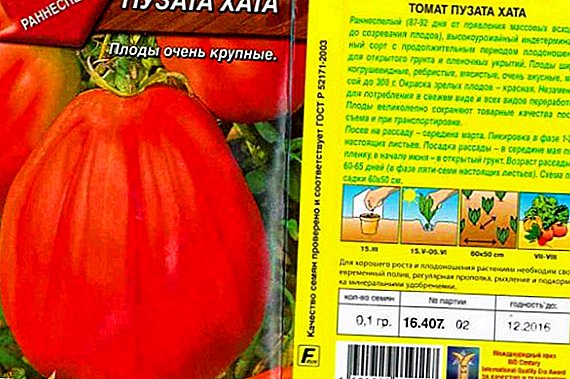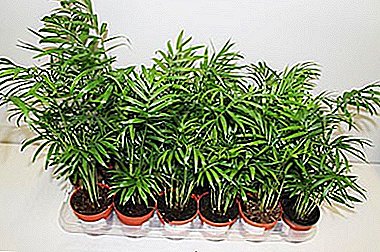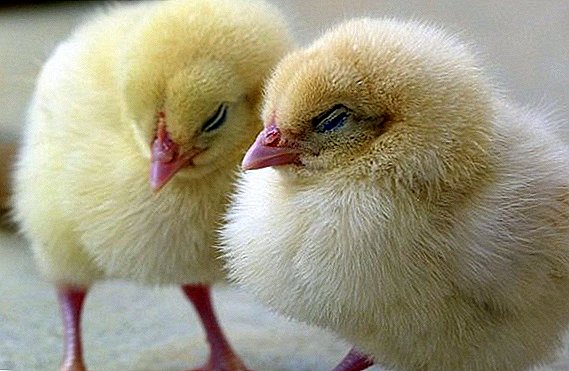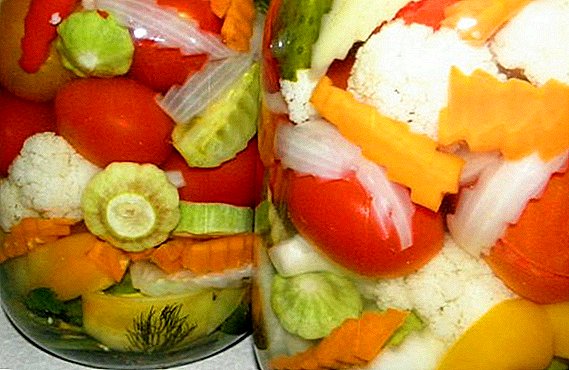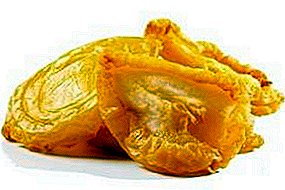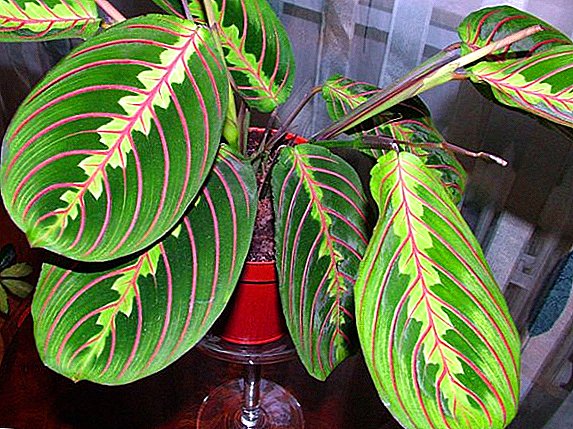 Maranta - A great choice for home decoration or even office space. Its large ornamental leaves are decorated with silver, white and red veins. It often happens that the arrowroot is sick and the leaves turn yellow, the reasons for this and how to deal with the problems in growing arrowroot, we consider in this article.
Maranta - A great choice for home decoration or even office space. Its large ornamental leaves are decorated with silver, white and red veins. It often happens that the arrowroot is sick and the leaves turn yellow, the reasons for this and how to deal with the problems in growing arrowroot, we consider in this article.
Difficulties in growing arrowroot, how to avoid them
Most often, arrowroot sick because of improper care and non-compliance with the rules of cultivation. Anything can become the reason why the leaves are drying, ranging from irrigation rules to non-compliance with the temperature regime.
Leaves turn yellow and fall off
 The fact that the leaves on your arrowroot will soon turn yellow, the plant can warn you in advance. First, the tips of the leaves will begin to lose color and turn pale, and then a yellow tint will appear on them, which will eventually "blur" over the entire surface of the sheet. Causes of yellowing and leaf fall may be non-compliance with the rules of content. So, for example, if your plant is standing in a cold place with drafts, the leaves of the plant may turn yellow.
The fact that the leaves on your arrowroot will soon turn yellow, the plant can warn you in advance. First, the tips of the leaves will begin to lose color and turn pale, and then a yellow tint will appear on them, which will eventually "blur" over the entire surface of the sheet. Causes of yellowing and leaf fall may be non-compliance with the rules of content. So, for example, if your plant is standing in a cold place with drafts, the leaves of the plant may turn yellow.
When asked why arrowroot leaf ends dry, the answer may be this: when the sun is too bright, the leaves get burned and start to dry and, as a result, they fall off. If the lower layer of arrowroot leaves begins to turn yellow and fall off - the plant has little moisture. In order to cure the plant, the flower must be moved to another location and fed. As a fertilizer, you can use complex fertilizer for indoor plants.
Leaves curl and blotch
 If you have a question why foliage leaves are folded, it's time to pay attention to the conditions of the flower. Leaves curl most often due to too low temperature in the room and drafts. If in winter the plant is standing next to the window glass and touches it, this may cause the leaves to become covered in spots and twist. Twisted leaves can also appear if the plant is infected with a fungal disease. In order to cure the plant, it must be treated with fungicides.
If you have a question why foliage leaves are folded, it's time to pay attention to the conditions of the flower. Leaves curl most often due to too low temperature in the room and drafts. If in winter the plant is standing next to the window glass and touches it, this may cause the leaves to become covered in spots and twist. Twisted leaves can also appear if the plant is infected with a fungal disease. In order to cure the plant, it must be treated with fungicides.
Important! If the plant does not "recover" after treatment with the drug, it is necessary to destroy the arrowroot in order to avoid contamination of other indoor flowers.
If you notice the first signs of leaf curling, this can be caused by the appearance of pests on the arrowroot. It is necessary to treat the flower with insecticides and acaricides. Another reason for the appearance of spots on the arrowroot and the twisting of the leaves of the flower is a surplus of potash fertilizers in the soil. In this case, it is better to transplant the plant into a new soil.
Leaves lose color
 Leaves of arrowroot can lose their color for two reasons: first - the wrong conditions of detention; the second is the age of the plant (only about the lower leaves). If the plant grows on your window-sill for a long time, it is better to pinch off the lower leaves (if they are pale). If the problem is not in the lower leaf layer, it is necessary to provide good illumination of the flower, as well as increase watering and increase the humidity of the air. To restore the plant faster, you can additionally feed the flower.
Leaves of arrowroot can lose their color for two reasons: first - the wrong conditions of detention; the second is the age of the plant (only about the lower leaves). If the plant grows on your window-sill for a long time, it is better to pinch off the lower leaves (if they are pale). If the problem is not in the lower leaf layer, it is necessary to provide good illumination of the flower, as well as increase watering and increase the humidity of the air. To restore the plant faster, you can additionally feed the flower.
Did you know? Maranta can "turn" in the direction of the light, so direct sunlight will destroy the flower.
The edges of the leaves are yellow-brown.
 If the arrowroot leaf tips turn yellow, then this problem is connected with non-observance of the rules of flower care. The edges of the leaves turn yellow with a brown tint due to an excess of bright sunny color (most often this problem occurs in spring or summer). Also, the tips of the leaves may become yellow-brown due to the dryness of the soil and air. For additional moisture, you can sprinkle the curtain near the battery with water - when heated, its moisture will accelerate. The edges of the leaves may become yellow-brown due to a sharp temperature drop.
If the arrowroot leaf tips turn yellow, then this problem is connected with non-observance of the rules of flower care. The edges of the leaves turn yellow with a brown tint due to an excess of bright sunny color (most often this problem occurs in spring or summer). Also, the tips of the leaves may become yellow-brown due to the dryness of the soil and air. For additional moisture, you can sprinkle the curtain near the battery with water - when heated, its moisture will accelerate. The edges of the leaves may become yellow-brown due to a sharp temperature drop.
Wilting and rotting stem
If you notice that the arrowroot has sluggish stems, which subsequently begin to rot, this is due to an excess of moisture in the soil. The plant must immediately be transplanted and all rotten parts removed from the flower.
Important! If there is still about 60% of a normal, healthy surface on the stalk - the arrowroot can still be saved.
To prevent such a problem, the plant needs to be fed on time and at the first signs of decay - additionally carry out plant fertilization with organic fertilizer for indoor flowers. To keep the stem healthy, it is necessary to observe the temperature regime depending on the season: in winter, the temperature is about 15–20 ° C; in summer - 20-25 ° С.
Slow growth
 Plant growth at one time may stop or slow down due to improper conditions of detention (temperature, lighting, humidity), as well as due to non-compliance with the rules of feeding. Too dry air - the main reason for the slow growth of arrowroot. Another cause of this problem could be the attack of the red spider mite, which can be controlled with insecticides.
Plant growth at one time may stop or slow down due to improper conditions of detention (temperature, lighting, humidity), as well as due to non-compliance with the rules of feeding. Too dry air - the main reason for the slow growth of arrowroot. Another cause of this problem could be the attack of the red spider mite, which can be controlled with insecticides.
Maranth pests how to deal with them
Despite the fact that the arrowroot is an indoor plant, it can also be affected by pests. The "attack" of insects on a flower can result in the plant dying.
Spider mite
Spider mite is the most common pest on indoor plants. Its appearance can be seen if you look under the leaf: the inner side of the leaf becomes pale, and then yellow and becomes covered with a thin cobweb and white spots. Leaves can even fall off. A spider mite is a small, almost transparent insect (size 0.2-0.4 mm) with a yellow or green shade. To combat this insect, you must use toxic chemicals, because folk remedies such as soap and tobacco will not be enough.
Did you know? In order to get rid of spider mites, it is also necessary to get rid of the larvae of this insect. It is possible to destroy the mite eggs laid using acaricides.
Spraying plants with pesticides is necessary in the open air. If you use insecticides or acaricides - the treatment must be repeated. Preventing the appearance of spider mites will be regular spraying and constant maintenance of the flower clean.
Mealybug
 Often the owners of the "prayer plant" are confronted with the question: why does the arrowroot leaves dry? The reason for this may be a mealybug, which affects mostly the leaves of the plant. The signs of the appearance of this parasite on the plant will be a cotton "footprint" under which the insect hides. If you detect the parasite in the early stages, the plant can be cured by treating the stems and leaves with soapy water. If the damage area is more than 60%, it is better to use a chemical tool like “Mosplan” or “Fufafona”.
Often the owners of the "prayer plant" are confronted with the question: why does the arrowroot leaves dry? The reason for this may be a mealybug, which affects mostly the leaves of the plant. The signs of the appearance of this parasite on the plant will be a cotton "footprint" under which the insect hides. If you detect the parasite in the early stages, the plant can be cured by treating the stems and leaves with soapy water. If the damage area is more than 60%, it is better to use a chemical tool like “Mosplan” or “Fufafona”.
Thrips
Thrips are small insects of dark-brown or brown-yellow color 0.5-2 mm in size. Due to damage from arrowroot with thrips, the leaves will change color - become whitish on the outside and will be covered with spots on the inside. The fight against this insect can be carried out manually (collecting insects) or by special preparations, for example, "Fitoverm", "Tanrek", "Spintor". It is necessary to use preparations according to the instruction and it is better to carry out processing of a plant on open space.
Important! The easiest way to prevent thrips will be spraying arrowroot cool water - insects do not tolerate low temperatures.
From folk remedies to combat these insects, you can use onions or onions of garlic (a pungent smell will scare away insects): 1 teaspoon of chopped onion / garlic or husk should be poured with a glass of water. An important point - inspection of neighboring plants: they can also be affected by thrips.
Shchitovka
 Due to the defeat of the plant by the shield, it slows down its growth, because this insect sucks the sap from the flower, and the stem of the plant is deformed. In addition, the shield leaves its mark - a sticky patina, which will eventually lead to the fact that a fungus forms on the plant and the flower stops breathing. If the plant is severely affected - there is no point in treating it, it is better to immediately destroy the flower, but if these are the initial stages, then you can cope with the shield.
Due to the defeat of the plant by the shield, it slows down its growth, because this insect sucks the sap from the flower, and the stem of the plant is deformed. In addition, the shield leaves its mark - a sticky patina, which will eventually lead to the fact that a fungus forms on the plant and the flower stops breathing. If the plant is severely affected - there is no point in treating it, it is better to immediately destroy the flower, but if these are the initial stages, then you can cope with the shield.
The algorithm of action is as follows:
- wash the plant in the shower to get rid of some of the larvae;
- wipe the plant with cotton wool moistened with alcohol;
- dry the flower;
- process the plant with Bitoxibacillin or Vertimec;
You need to repeat the procedure in a week.
Maranta - quite a whimsical plant and requires special conditions for its maintenance, but all the effort spent will meet your expectations, and the flower will delight you with its beautiful view.


